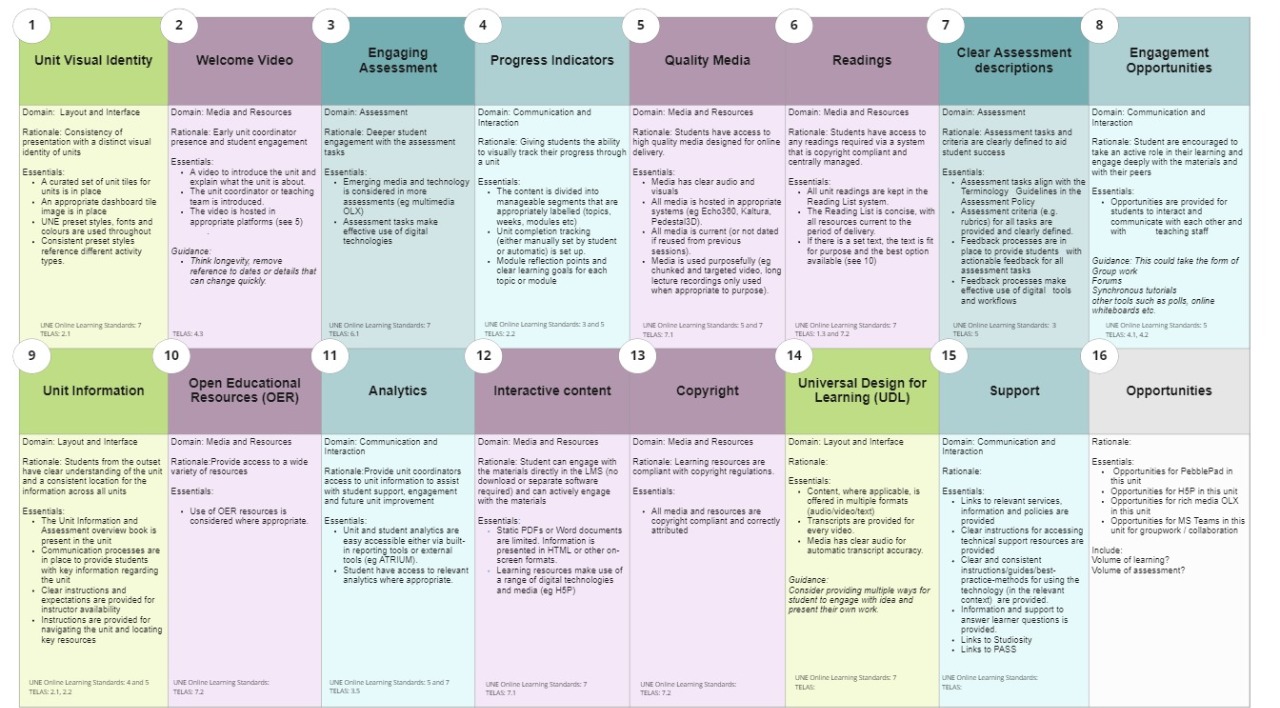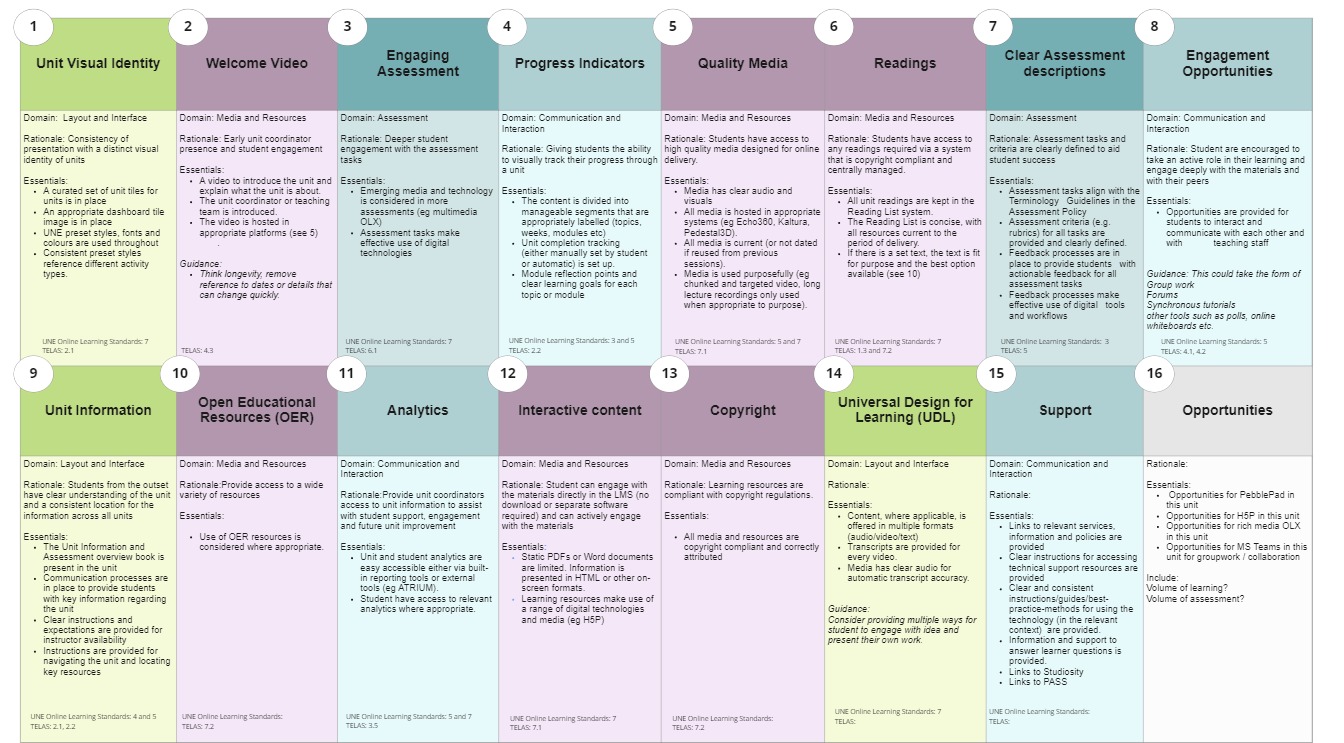

This element focuses on students having a clear understanding of the unit and consistent location for the information that is included across all units.
Learners need to know the overall aim of a unit, the learning goals and expectations including required tasks/activities and assessment. Being able to easily locate such information leaves learners with more capacity to engage with the actual learning process. This reflects the connection with cognitive load which is also associated with Element 1.
Clear indications of anticipated workload can help students with time management and planning which support student sense of agency. Agency-beliefs help students know what to do to achieve academic success. A well-designed online learning environment enables students to be proactive and engage with deep learning as opposed to being reactive and engage in a surface or superficial manner.
This element relates to the following research and practice informed guidelines/ frameworks:
TELAS Guidelines
UNE Learning Standards
Some things you can do include:
Unit news and announcements: time saying tips Digital Education @ UNE Blog
Support will be provided as part of Project Uplift implementation process.
You can also contact the Learning Design team, learningdesign@une.edu.au for in person advice and guidance.
Acode (2017). Threshold standards for online. Retrieved from https://www.acode.edu.au/pluginfile.php/1530/mod_resource/content/1/ACODE_TSFOLE_draft_1.2.pdf
Domain: Layout and Interface
Rationale: Students from the outset have clear understanding of the unit and a consistent location for the information across all units
Essentials:
Standards: